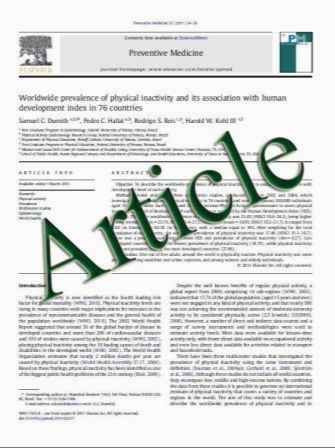Impact of Lymphoid Follicles and Histiocytes on the False-Positive FDG Uptake of Lymph Nodes in Non-Small Cell Lung Cancer
- نوع فایل : کتاب
- زبان : انگلیسی
- مؤلف : Seong Young Kwon & Jung-Joon Min & Ho-Chun Song & Chan Choi & Kook-Joo Na & Hee-Seung Bom
- چاپ و سال / کشور: 2011
Description
Purpose Although 18F-fluorodeoxyglucose (FDG) PET/CT has improved the accuracy of evaluating lymph node (LN) staging in non-small cell lung cancer (NSCLC), falsepositive results remain a problem. The reason why benign LNs show high FDG uptake is still unclear. The aim of this study was to identify molecular and pathological characteristics of benign LNs showing high FDG uptake. Materials and Methods We studied 108 mediastinal LNs of pathologically benign nature obtained from 43 patients with NSCLC who underwent FDG PET/CT and surgery. We measured the following parameters in each LN: maximum standardized uptake value (maxSUV), short diameter, maximum Hounsfield unit (maxHU) value, occupied proportions of lymphoid follicles, histiocytes in extrafollicular space and the degree of glucose transporter 1 (Glut1) expression. We compared the parameters between two LN groups according to maxSUV. Results There were 74 LNs showing maxSUV.3.0 (group 1) and 34 LNs with maxSUV<3.0 (group 2). The size of LN (p<0.001) and maxHU (p=0.003) in group 1 was higher than that in group 2. Histologically, the occupied proportions of lymphoid follicles (p=0.031) or histiocytes (p=0.004) were higher in group 1. The Glut1 expression of lymphoid follicles (p=0.035) or histiocytes (p=0.005) was also higher in group 1. Conclusion Lymphoid follicular hyperplasia and histiocyte infiltration associated with Glut1 overexpression are important molecular and pathological mechanisms for false-positive FDG uptake in benign mediastinal LNs in patients with NSCLC.
Nucl Med Mol Imaging DOI 10.1007/s13139-011-0085-9 Received: 17 November 2010 / Revised: 15 April 2011 / Accepted: 18 April 2011


